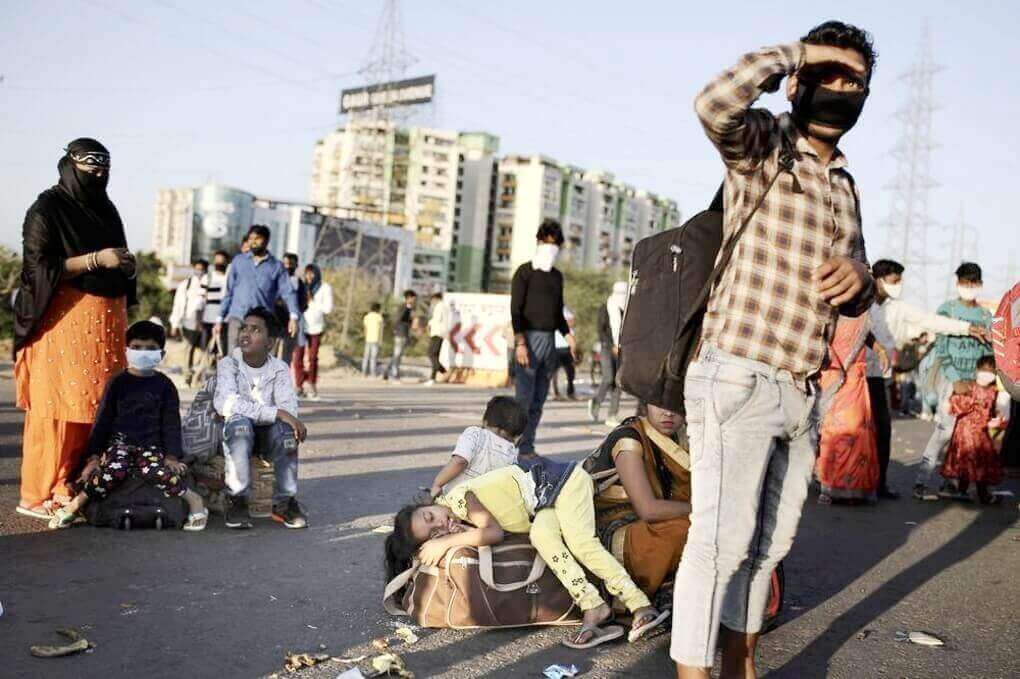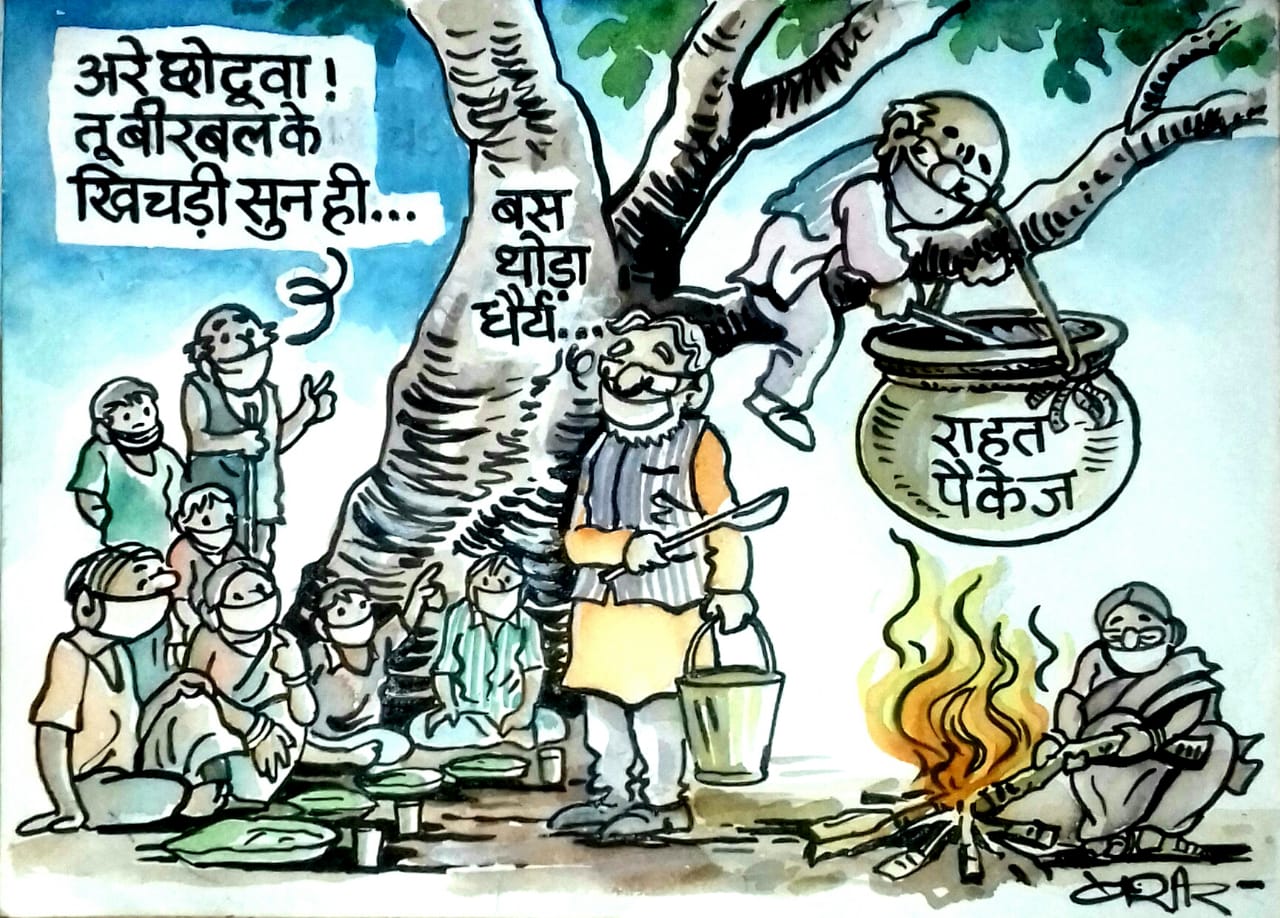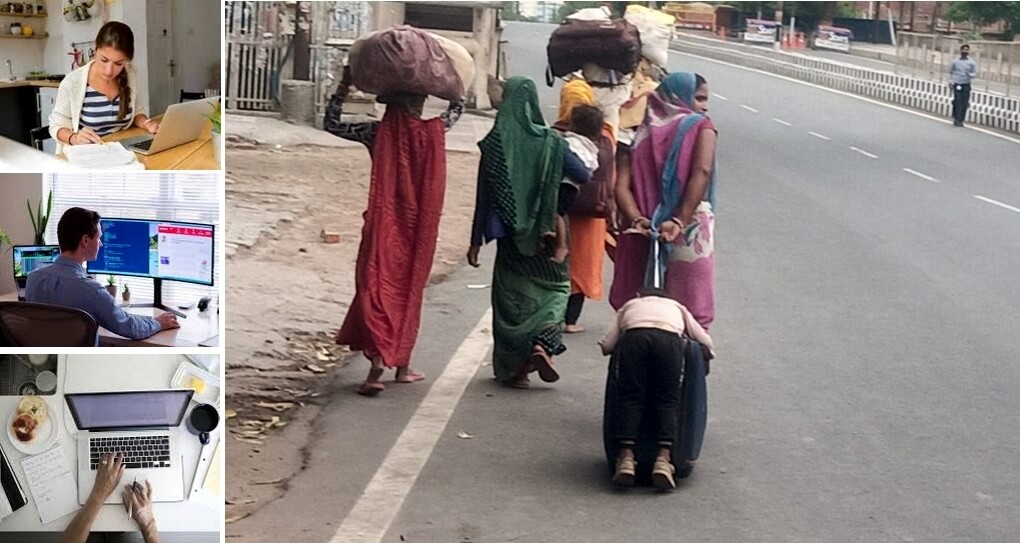
IT has now been nearly four months since the World Health Organisation warned us about the coronavirus emergency and two months since the government of India imposed a countrywide lockdown in India. China, the country of origin of the virus and also of the lockdown strategy which has shaped the overwhelming global response, albeit with considerable local variations, has more or less bid goodbye to the epidemic, as have a few other Asian countries. However, for much of the Americas and Europe and, crucially for us, India and the rest of South Asia, the epidemic is still raging strong. And if anywhere in the world the cost of lockdown has far outweighed the damage done by the epidemic, it is India. Ironically, after two months of a chaotic, clueless and cruel lockdown as India gropes for some sort of exit strategy, the epidemic continues to escalate and the promised flattening of the curve is nowhere in sight.
The world has surely witnessed more lethal viral outbreaks in the past, the 1918 Spanish Flu being one of the deadliest in modern history followed by assaults of other killer varieties like Ebola, Zika, Sars, and Nipah in more recent decades. But Covid19 has taken the whole world by surprise with the scale and speed of its spread. Coupled with the disruption caused by the lockdown, the crisis has been truly unprecedented and unthinkable. In many ways it has been a pandemic caused and exacerbated by the expansion and intensification of global capital. The mindless destruction of nature, greatly increased global travel and migration, corporatization of agriculture, and systematic neglect of public health, all organically associated with the pattern and trajectory of globalization, have contributed to the disaster caused by the Covid19 pandemic.

As far as India is concerned, the havoc so far has been caused more by the lockdown than the epidemic. This is not to downplay the fact that the spread of the epidemic has lately increased considerably in India. In spite of our abysmally low testing rate, the number of confirmed Covid19-positive cases has now gone past one lakh, but the intensity of the epidemic has been significantly less in India than the global average. At a little above 3%, the fatality rate in India has been less than half of the global average or the rate recorded in the US, and way below the 10-20% range prevailing in several European countries. But the underprepared healthcare system in India has been pretty badly challenged by even this moderate intensity of the epidemic. Add to this the fact that many patients could not access even routine healthcare for other ailments because of the singular focus on the epidemic, and we get some idea of the Covid19 impact on India’s public health situation.
The Modi government’s response to the Covid19 challenge has revolved predominantly around the lockdown, which has been presented as the decisive weapon to win this battle. At the time of announcing what later turned out to be only the first phase of a prolonged lockdown, Narendra Modi told us that the country would be pushed back by 21 years if it failed to strictly adhere to the lockdown norms for 21 days. He also reminded the people in his constituency of Varanasi, that the battle of Mahabharat was won in 18 days and the battle against Covid19 would be won in 21 days. Subsequently as the lockdown was extended, the Niti Aayog, the main official policy thinktank of the government, predicted in late April that the curve would definitely be flattened by mid-May and new cases would stop being detected by 16 May! India recorded the highest spike in cases around that time and the surge has been unstoppable, with ten thousand new cases being added every two days.

The lockdown has thus clearly failed to achieve the desired result in India. Lockdown has worked in China, where it was adopted as a limited and targeted strategy backed by the proven capacity of the Chinese state to enforce it without any leakage. Different versions of lockdown have worked in countries like Vietnam and New Zealand and several other countries where it was introduced on time and backed up by proper medical and other delivery strategies ensured by the state. All these states have been clear in their understanding that lockdown was only a way to buy time, what mattered was how that time was used to step up medical preparations and implement allied plans to contain and combat the epidemic. Viewed in this context, in India the lockdown has worked best only in Kerala as a state, and a few districts in some other states, where the emphasis of the state has been not on enforcing the lockdown but on ensuring the complementary components of the overall strategy.
The lockdown response of the Modi government has been deficient, if not counterproductive, on all counts. Crucial time was lost in February and first three weeks of March. The government and the Sangh-BJP brigade and India’s dominant media had other priorities – the ‘Namaste Trump’ event in Ahmedabad and regime change in Madhya Pradesh, to mention two high points of India’s event-managing establishment. If they ever mentioned Covid19 during this period, it was only to deny and downplay the threat to India. And when the government finally woke up, it only lapped up the lockdown idea as yet another shock-and-awe drill like the November 2016 demonetization, as an opportunity to unleash the spectacle of the world’s biggest ever lockdown! Not a thought was spared for the people who either did not have a home of their own or would be desperate to return to places they called their homes. Not a thought was spared for the people who have to work and earn every day to even think of having two square meals.

Thus the lockdown in India has turned out to be anything but the regimented designer spectacle the regime wanted to produce punctuated by eye-catching events like the inaugural clapping and clanging, the lighting of torches and candles or the showering of rose petals from the sky. The lockdown will not be remembered for these sound and light and flower shows or the 8 PM Modi speeches and the fraudulent rhetoric of the 20 Lakh Crore package and Aatmanirbhar Bharat Abhiyaan. The lockdown will not be remembered for the sudden fall in air and noise pollution, for the surreal return of the lost sounds and sights of nature and its flora and fauna that had started disappearing from our increasingly urbanized, consumerist existence. The lockdown in India will be remembered for the return of India’s suppressed social reality that Modi sought to wall off during Trump’s visit, the uncomfortable reality that remains invisible in the dazzling glitter of globalization, drowned in the loud drum beats of development. The lockdown will be remembered for India’s migrant workers.
If the celebrated ‘functional anarchy’ of India continues to work it is not because of our age old civilization. It is not because of the state and its feudal-colonial power structure, its draconian laws, trigger-happy security forces and smug bureaucracy. Not because of our castes and customs, ancient faiths and modern fancies. It is the real people, millions and millions of India’s working people, their never-say-die spirit and indomitable courage, that keeps India going. Even if the dominant media continue to marginalise and invisibilise them, even if the judiciary fails to recognize them as human beings with needs and rights, they have come back with a vengeance on India’s mindscape. They have emerged as the real fighters and builders of modern India.

The lockdown has also shown us the depth of the Indian people’s desire for democracy and justice. Many even among the relatively privileged who are able to remain indoors have refused to limit their existence to the government’s ‘stay at home’ order or to capital’s new ‘work from home’ code or ‘home entertainment’ mantra. Instead they have developed innovative forms of resistance with their new-found ‘protest from home’ paraphernalia and ‘fight from home’ spirit.
It is not enough, or rather redundant, to say that the post-Covid19 world cannot go back to the old normal. In India, we can clearly see the contours of the ‘new normal’ the rulers are trying to define for the people. Democracy is being sought to be suspended and truncated as extensively and permanently as possible. Labour laws are being dismantled; land rights are being sought to be overruled; after the manufacturing and service sectors, agriculture is being sought to be brought under increased corporate control. New tools of surveillance are being enforced and the lockdown is being used as a licence to silence dissent by all means.
This ‘new normal’ is very much a colonial era normal for India, and accompanying this is the virulence of the communal fascist agenda of the Sangh-BJP and the corporate might of global capital and India’s own state-patronised crony capitalists. As we emerge from the shadow of the pandemic and the labyrinth of the lockdown, the challenge is clear: to stop this regressive restoration of the old and fight for the emergence of the new, and turn the victims of the lockdown into a new social power. The humiliating homecoming of the migrant worker, the reverse migration, and their bitter experience of the inherent cruelty of the existing order, must lead to a new unity between the rural and urban poor and the rise of a new level of class consciousness and militant assertion of the working people.
Liberation Archive
- 2001-2010
-
2011-2020
- 2011
- 2012
- 2013
- 2014
- 2015
- 2016
- 2017
- 2018
- 2019
-
2020
- Liberation, JANUARY 2020
- Liberation, FEBRUARY 2020
- Liberation, MARCH 2020
- Liberation, APRIL 2020
-
Liberation, MAY-JUNE 2020
- Stand With the Cyclone Ravaged Areas and People : Donate Generously to Relief Efforts
- The Lockdown Has Unlocked India's Suppressed Social Reality of Migrant Workers
- Modi's Covid19 Stimulus Package: Monumentally Deceptive and Disastrous
- Enslaving India's Workers and Renting Out India To Global Capital Is Not the Way to Self Reliance
- Dealing with the Lockdown: Precious Lessons from the Unique Experience of an Unprecedented Phase
- Remembering Ambedkar amidst the Covid19 Pandemic and Lockdown
- May Day 2020 : International Day of Workers in Times of Global Pandemic
- The 202nd Birth Anniversary of Karl Marx
- Experiences of Relief Work in Bihar: Government Abdicates, People take Initiative
- Lockdown Emboldens Feudal, Communal and Criminal Forces
- The Girl on a Bicycle
- Will the Government Not Give Us Jobs?
- Migrant Workers of Jharkhand Stranded in Maharashtra During Lockdown
- Lockdown Relief Reports from Uttar Pradesh
- The Varanasi Mohalla Kitchen Experience
- CPIML Activities in Kerala during the Lockdown
- Initiatives in Tamil Nadu During Lockdown
- Covid 19 Lockdown Relief Work in Chandigarh
- Thousands of Distressed Workers in Jaipur Come Out on the Streets
- Relief Work During Lockdown in Delhi
- Invisible but Irreplaceable? Migrant Labour BC 2019 and AC 2020
- Karnataka : Notes on Migrant Workers Assistance Campaign
- The Pandemic and Beyond : Free Quality Healthcare is a Fundamental Right
- Epidemic Act 1897 : A Draconian Colonial Hangover
- Kerala Model Delivers in Covid -19 Control
- A Note on Herd Immunity
- Modi Regime's War on Working Class
- Attacks on Students and Public Education
- The Pandemic's India Journey: Short Takes
- Open Letter to British Labour Party Leader: Don't Align the Labour Party with Allies of Modi's Far-Right Regime
- Facilitating the Corporate Plunder of Kashmir Under Cover of Covid19
- Hunger Strike by CPIML Leader BN Singh Incarcerated in Medini Nagar, Jharkhand
- Hari Vasudevan
- Tribute : Comrade Narender Kumar & Comrade Suhail Akhtar
- Liberation, JULY 2020
- Liberation, AUGUST 2020
- Liberation, SEPTEMBER 2020
- Liberation, OCTOBER 2020
- Liberation, NOVEMBER 2020
- Liberation, DECEMBER 2020
- 2021-2030
Charu Bhawan, U-90, Shakarpur, Delhi 110092
Phone: +91-11-42785864 | Fax:+91-11-42785864 | +91 9717274961
E-mail: info@cpiml.org




